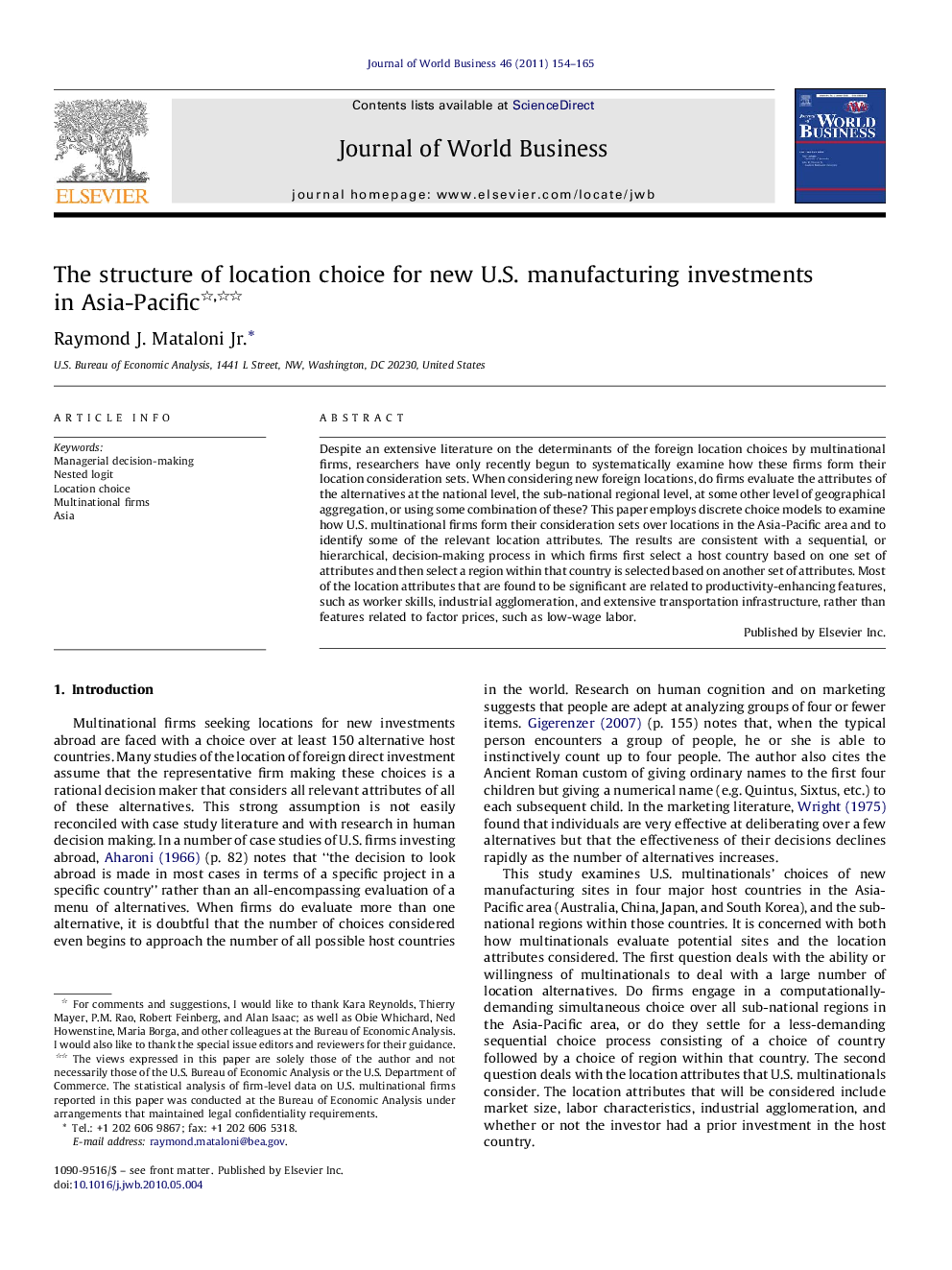| Article ID | Journal | Published Year | Pages | File Type |
|---|---|---|---|---|
| 1002519 | Journal of World Business | 2011 | 12 Pages |
Despite an extensive literature on the determinants of the foreign location choices by multinational firms, researchers have only recently begun to systematically examine how these firms form their location consideration sets. When considering new foreign locations, do firms evaluate the attributes of the alternatives at the national level, the sub-national regional level, at some other level of geographical aggregation, or using some combination of these? This paper employs discrete choice models to examine how U.S. multinational firms form their consideration sets over locations in the Asia-Pacific area and to identify some of the relevant location attributes. The results are consistent with a sequential, or hierarchical, decision-making process in which firms first select a host country based on one set of attributes and then select a region within that country is selected based on another set of attributes. Most of the location attributes that are found to be significant are related to productivity-enhancing features, such as worker skills, industrial agglomeration, and extensive transportation infrastructure, rather than features related to factor prices, such as low-wage labor.
